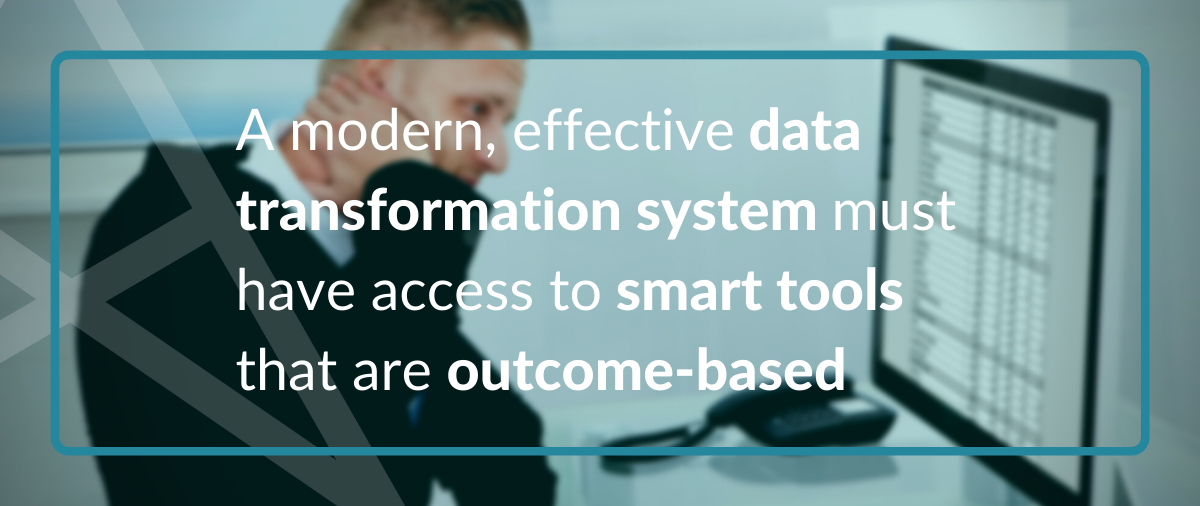At Theorem, the movement of data is fundamental to our product. Whether you are using our reporting products to achieve transparency of your broker accounts or our workflow services to move trades through the post-trade lifecycle, it is essential to have an environment that makes it easy to normalize and transform data from place to place.
In fact, many customers have such a strong need for these sorts of innovations that there has come a strong demand for data transformations as a stand-alone service — that is, to give users the ability to normalize and distribute data without necessarily being part of a pre-defined post-trade process.
Legacy Data Transformation
All of us are familiar with simple ways to change data if we’ve ever worked with Spreadsheet software. We can use simple formulas like left, right, middle, etc. to make modest changes that clean up trade and position records, or any type of data for that matter. Formulas can be used individually or together to make increasingly complex transformations. These legacy transformations are often all that is needed to serve your needs and the data you have right now.
But, legacy formulas seldom address what happens when your data changes or isn’t reliably clean. Simple issues like an extra character or a ticker code that could be one character (“C”) or two characters (“ES”) can make simple formula-based transformations untenable. Even worse, as many people expand their reach into new asset classes, markets, and products that might be sourced by an ecosystem of databases, the cost of moving and normalizing this data increases rapidly without a more modern way of mapping.
A More Modern Approach
A modern, effective data transformation system must have access to smart tools that are outcome-based rather than rule-based. Instead of telling a spreadsheet or app what to do, we should be telling it the desired result. Once we know what we are looking for, we can use smart transformations to produce powerful and reliable results, such as:
- Determining if a trade is a buy or sell by looking at other fields
- Figuring out a derivative contract year and month from tickers or other fields that don’t reliably contain this data in the same format for all asset classes
- Use known confirmed trades or positions to set up data mappings
- Create automatic lookups for referential fields such as account or broker names that automatically create an entry
- Determine or confirm a product identity based on its settlement price or other characteristics that identify it in our managed datastore
- Securely identify and utilize industry synonyms for data.
- Use anonymized mapping history to predict how data should be mapped and identify potential problems with existing configurations
Users of systems that have outcome-based intelligent mappings can quickly map data as a configuration, without long onboard times and zero development effort from any developers or engineers in over 98% of cases.
Finally, the ultimate goal of transformation systems is to have everything automatically mapped, with close to zero onboard time. Since its creation, Theorem’s data transformation system has imported billions of post-trade data records among hundreds of thousands of file formats. Our app will soon be in a position to reliably predict all relevant fields based on the most common use cases without any user intervention. This means that onboarding new allocation workflows, trade matches, or ETL replacement jobs can be as simple as dropping a file into our app and telling it what to do with the data that it automatically normalizes.
To learn more about how our data mapping solutions, reach out to us today.
Schedule some time with us to discuss this insight further or learn about the ways in which Theorem can help elevate your post-trade processes.
Like what you read? Provide us your email and we’ll send you the latest insights, videos, and e-books built by us and thoughtfully-designed to help you focus on your core business, straight to your inbox.


